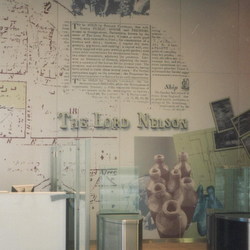 |
 |
INTERPRETATION STRATEGIES AND PLANS
Often required as a condition of consent for developing an historic place interpretation strategies and plans are the tools used to create a display or feature that illustrates and explains the importance of the past development of the site within its new context. Interpretation devices are a means of communication between past and present communities, professionals and the general public. There are many ways to achieve this requirement including signage, landscape and hard components, soundscapes, displays of artefacts and historic material and an art installation. If highly significant archaeological material is unearthed or components of an existing building are considered of significance it may be a statutory requirement to incorporate these elements in the finished design. The purpose of an interpretation programme is as follows:
An interpretation strategy provides the concept and framework and the plan a detailed method for implementing that programme. This component, where professional and technical work is bridged to become accessible to the general public has been a long-standing aspect of CRM’s work profile beginning with contributions to the archaeology displays in Hyde Park Barracks in the 1980s. Either as sole responsibility or in partnership with design consultants other examples include: Henry Deane Place, Central Sydney (Baulderstone Hornibrook 1999) Ophir Reserve and Cemetery Interpretation Strategy (Carbonne Council 2002) Interpretation plan of the archaeological investigation of the KENS site (Leighton Properties 2005) Interpretation plan for the archaeological investigation of 95-101 George Street Parramatta (Leighton Properties 2006)
|











